This is the 19th post in a series of Nikon D850 tests. The series starts here.
The Focus Shift Shooting feature of the D850 looks to be a boon to those wanting to achieve improved depth of field (DOF) through focus stacking. However, the minimum step size is marginally too large for that. Another possible use for Focus Shift Shooting is focus bracketing to get the sharpest possible image in one focal plane. With top-notch lenses and good technique, the minimum step size might be too large for that purpose.
The purpose of this post is to quantify the issue and suggest a workaround, which you m,may decide is unnecessary once you’ve looked at the numbers.
Remember yesterday’s post about the Sigma 50 mm f/1.4 ART lens on the D850 with an inkjet-printed target? I took the green-channel f/5.6 MTF50 vs step size curve, and offset it in one-step increments.
The curve generated by taking the highest of each of the three curve above is the MTF50 you’d see versus subject distance with perfect focus stacking. It varies between about 2100 cycles per picture height (cy/ph) and 1800, depending on the distance. That’s not too bad for stacking, but more than you’d like to give up for focus bracketing, and that’s with a target that’s not all that sharp.
I decided to do some tests with the sharpest MTF50 target that I have, a backlit razor blade:
Here’s a crop, with the region of interest (ROI) marked in red.
Here’s the protocol for the test:
- Sigma 50 mm f/1.4 Art on D850.
- ISO 64
- Focus shift, silent shutter option
- 50 steps
- Minimum step size (1)
- Aperture exposure mode
- f/4
- Wescott LED panels set to 5500 K.
- Target distance, 1 meter.
- Fast Raw Viewer to discard the really out of focus images
- dcraw in document mode
- Matlab to pick ROIs
- MTF Mapper to calculate MTFs
- Matlab to summarize data
- Excel to plot results
Here’s a sample result from one of the runs:
And here are the best, average and worst peak sharpnesses for each channel over all 8 runs:
The variation is not as great as I had feared.
I don’t know how useful the standard deviation (sigma) of a sample set this small is, but for what it’s worth, here it is:
If the statistics are Gaussian, about two-thirds of the results should lie between the dark blue and the green bar heights.
The workaround, should you decide you need it, is the same as the test: just do several Focus Shift Shooting runs and look for the best results if you’re doing focus bracketing, or let the stacking program sort it out if you’re focus stacking.
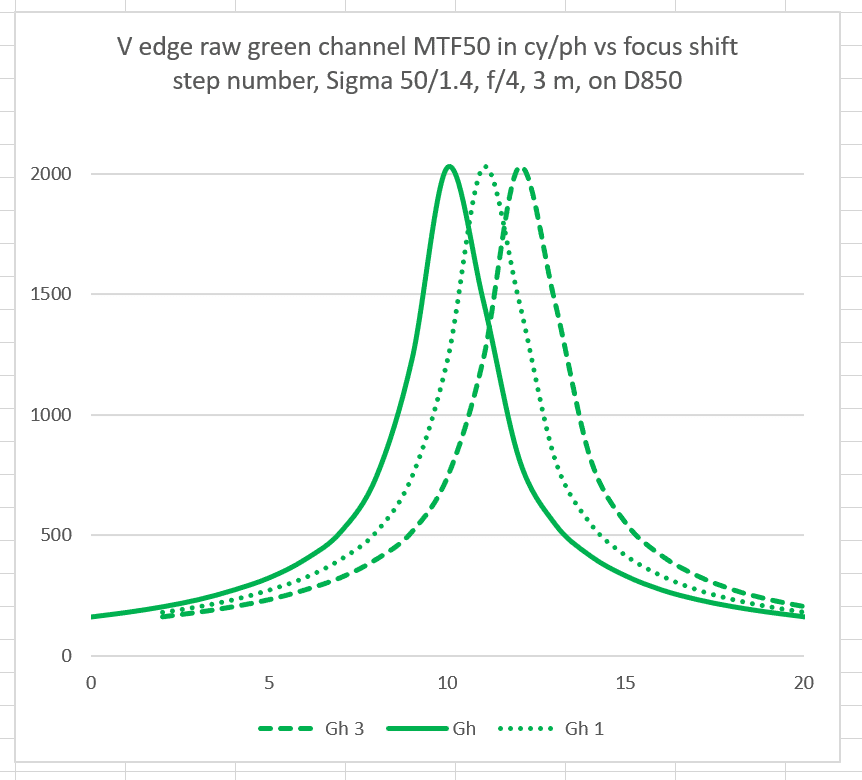
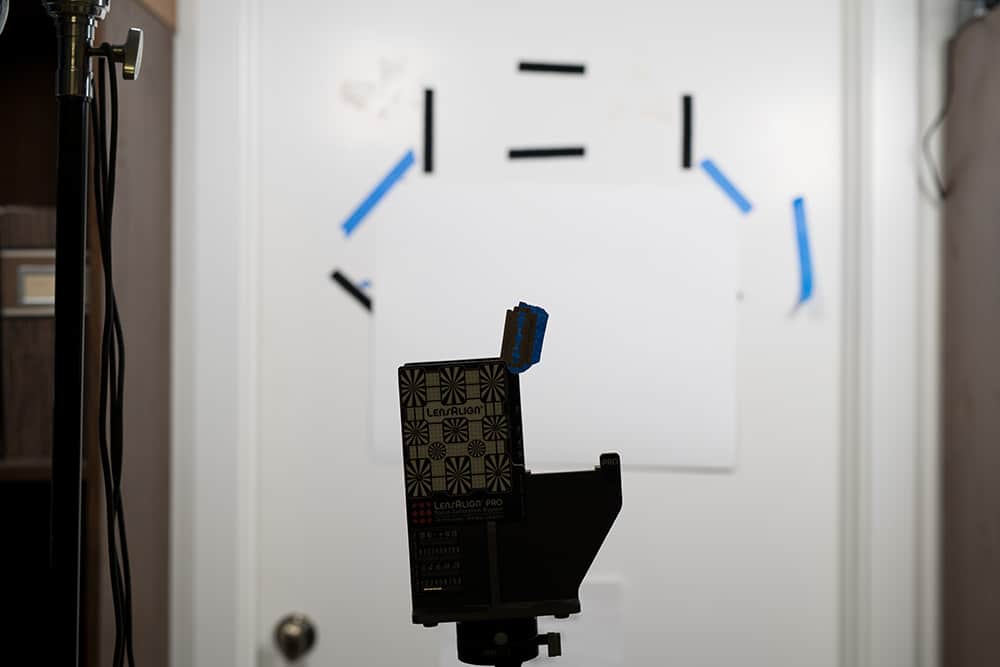
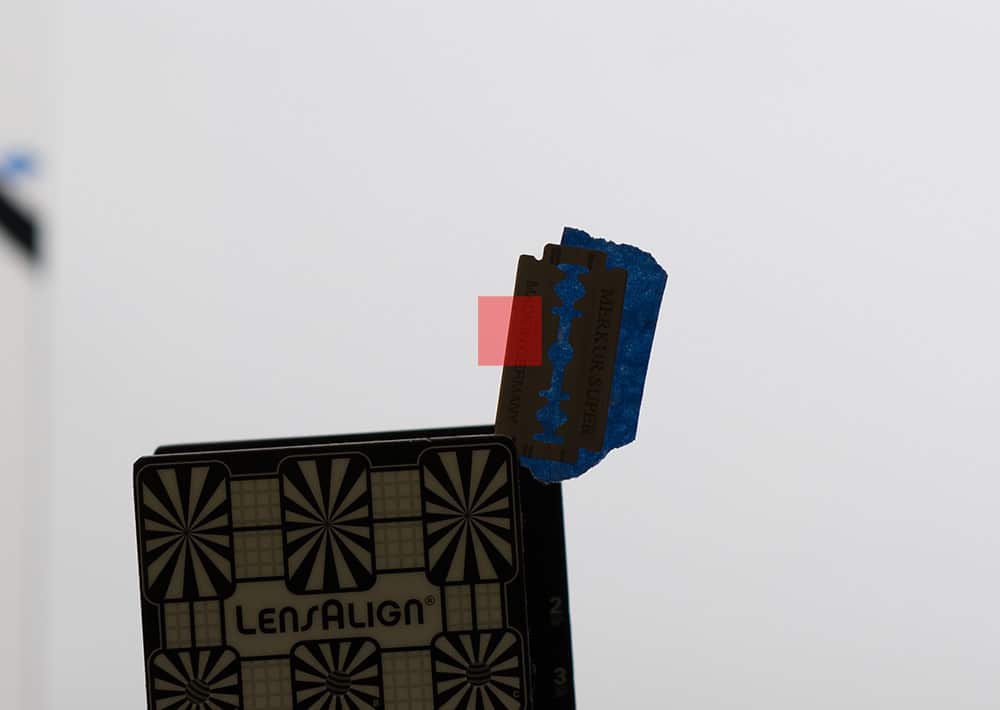
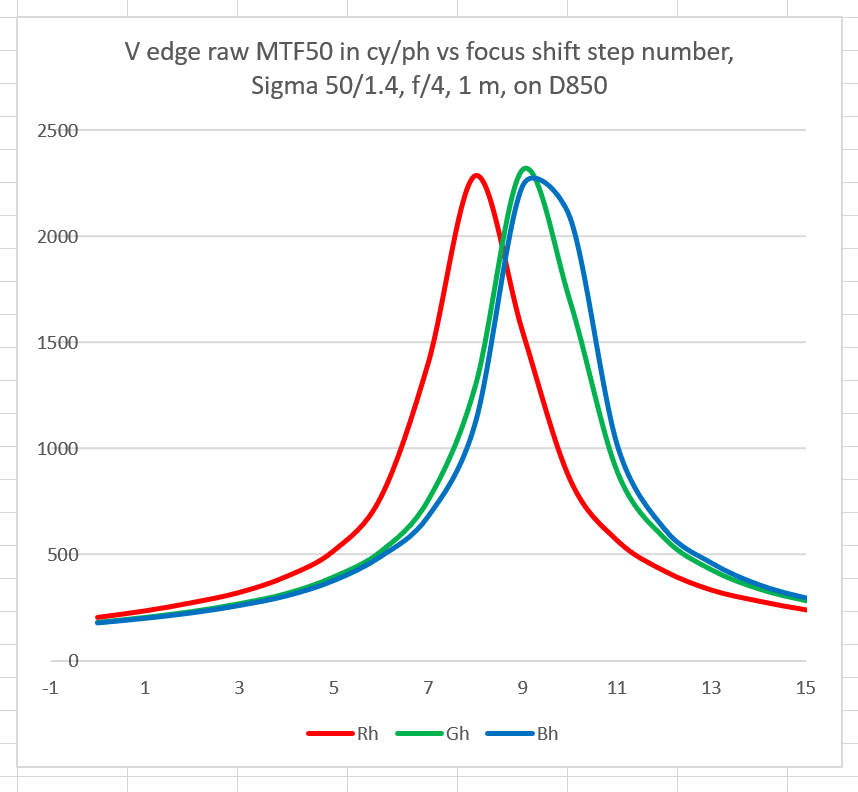
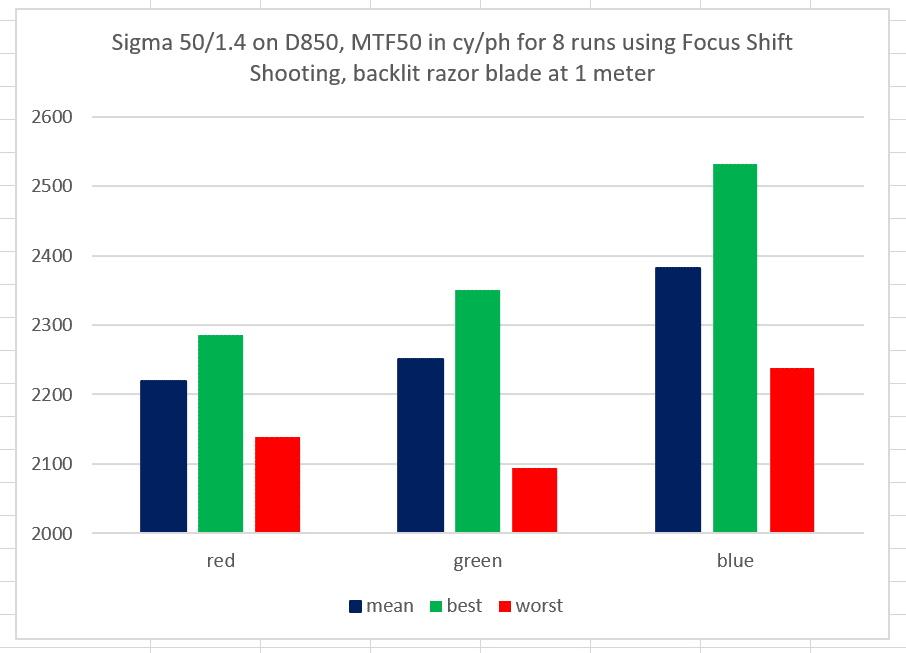
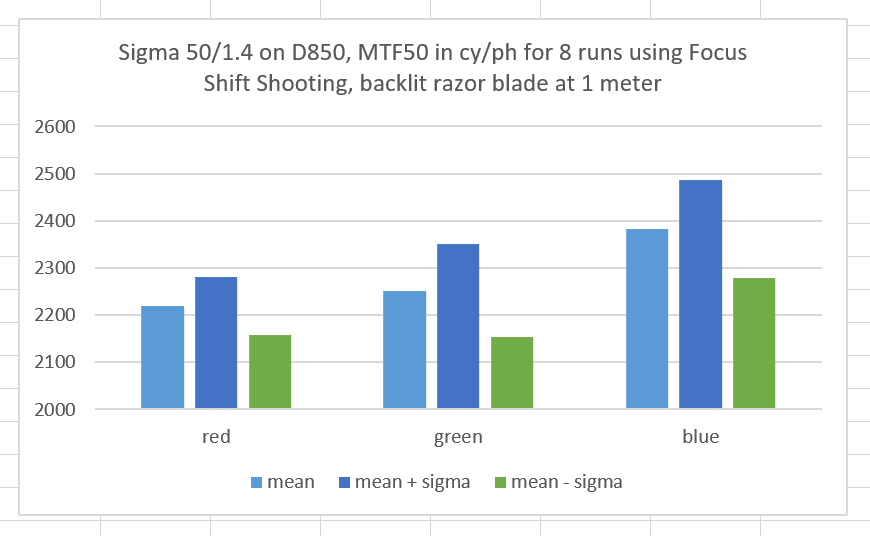
Jack Hogan says
Jim, I am curious. Do you think we could get a decent estimate of the MTF of your paper target by dividing peak razor SFR by peak paper SFR, say for green, taken in the same conditions?
AZSteve says
I just had an experience supporting your notion that step size one is marginally too large. The Sigma 35mm Art has curvature of field at infinity, visible even at f/8. I did a stack of nearby mountains at f/6.3, step size one, and only two frames were in really sharp focus anywhere, one in the center, one on the edges. Stacked with Zerene they produced the best image at infinity this lens has ever made, but one would be more comfortable if the steps were smaller, maybe half the size.